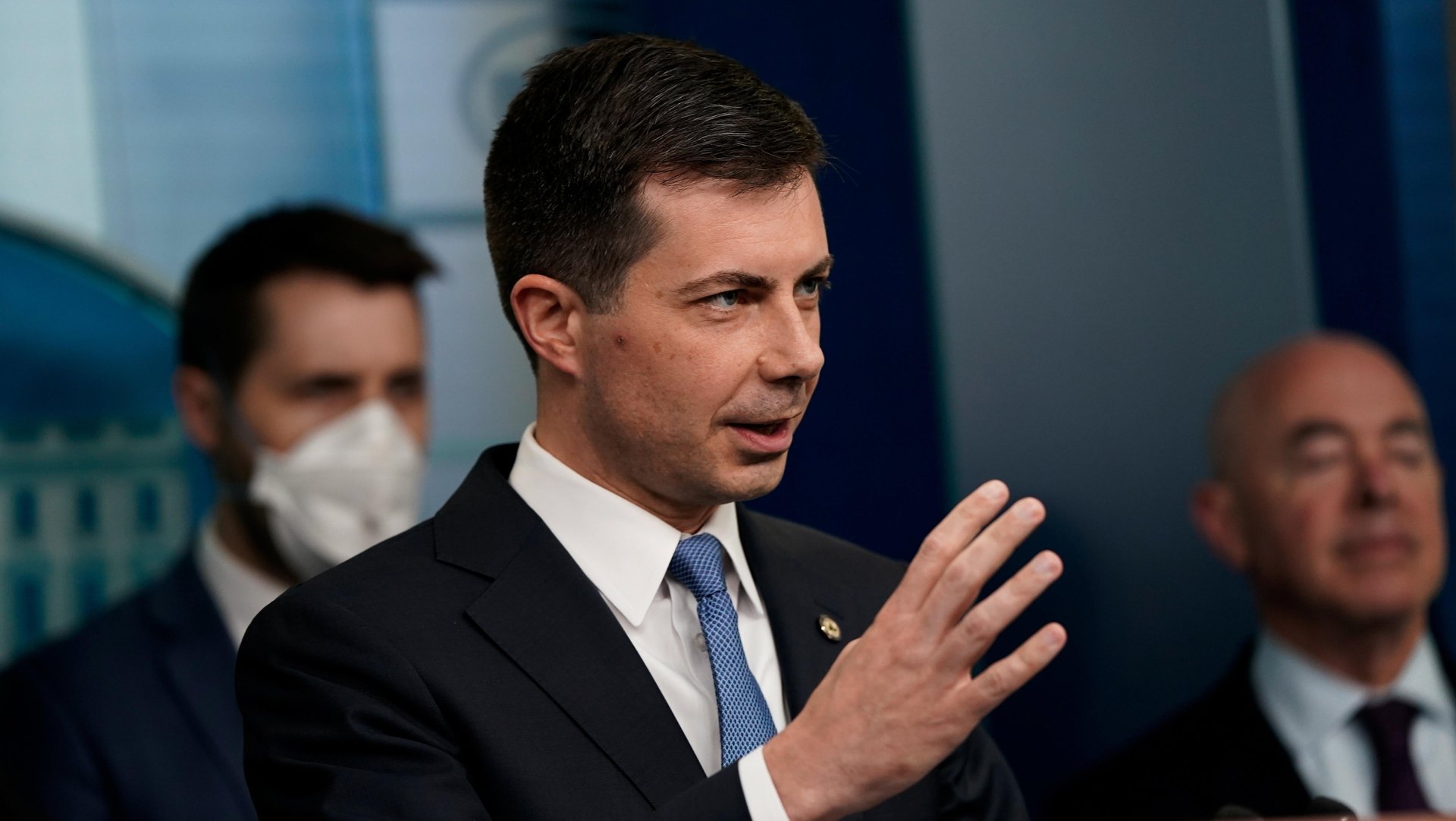US transportation secretary Pete Buttigieg on the psychological hurdles for EVs and self-driving cars
In an interview with Quartz, Buttigieg put range anxiety and traffic accident deaths in perspective

There are plenty of policy choices that could help electric vehicles (EV) go truly mainstream: ongoing tax credits for EV purchases; more investment in charging stations; outright bans on sales of new gas-powered vehicles, like the one California intends to have in place by 2035.
As secretary of the US Department of Transportation, Pete Buttigieg can discuss any of these measures at length (and did during an Oct. 24 visit to Quartz parent G/O Media’s office in New York). But as the longtime owner of a used Ford C-Max hybrid minivan, he also acknowledged the basic psychological hurdles that will need to be overcome on the way to mass adoption.
Range anxiety is real, but sometimes misplaced
In conversation with Quartz executive editor Heather Landy, Buttigieg addressed the disconnect between the realities of EV ownership and what drivers typically think they need.
For starters, while there are far fewer EV charging stations than gas stations, that’s only true until you remember that every home or workplace with access to a wall socket is also, in effect, a potential charging station.
“Charging a car has more in common with charging your phone than it does with filling up your gas car, partly because for most people, you can, either at home or at work, charge your car—which is not how it works with gas stations,” Buttigieg said. “Not everybody has that,” he added, “which is why supporting multifamily dwellings is important.” But most prospective EV owners already have the infrastructure they would rely on most.
And then there is the very real anxiety of the EV running out of energy before it reaches the destination. Here again, Buttigieg suggested a reframing of the problem.
“[W]e tend to buy cars for our longest trips, not our most frequent trips,” he said. So a long-distance road trip would necessitate access to public charging stations. But most EV owners should be able to manage a commute to work or errands around town—i.e. the most common uses of their cars—on a single charge. That said, Buttigieg concluded, “It will take a while for us to close the gap between the range we think we need and the range we actually need.”
The psychology of road safety and self-driving cars
Buttigieg, who recently committed $5 billion in federal aid to local efforts at improving road safety, is also eager to see Americans change the way they think about traffic deaths.
In 2021, roughly 43,000 people in the US died in motor vehicle crashes, up 10.5% from the year before, according to the National Highway Traffic Safety Administration, marking the highest number of fatalities since 2005. The statistics, he suggested, support the argument that autonomous vehicles—once the technology is perfected—could make America’s roads safer.
“Just to be very clear,” Buttigieg said, “human drivers aren’t just problematic. They are murderous. Forty thousand people a year die in a car crash. And we have been bathed in this level of carnage all our lives. And so we’re a bit like people who grow up in a place that’s experiencing a war, in terms of how normal we think that is.”
Technology, he added, “is not always the answer to everything. But frankly, it would be hard to do worse than human drivers when it comes to what we could get to theoretically with the right kind of safe autonomous driving.”
Autonomous vehicles will have accidents, too
Buttigieg was hard-pressed, as is the auto industry, to put a timeline on the commercialization of self-driving cars. But he’s already bracing for the inevitable backlash caused by accidents involving autonomous vehicles.
“I think there is a sort of promised land on the other side. But psychology is going to be tough,” he said. If “robots killed 10,000 people a year on the roads, there would be an uproar. But that would represent a 75% reduction in roadway deaths compared to where we are now. So we’ve got to make sure the reality and the perception of it is moving in the right direction.”